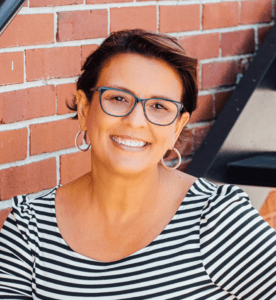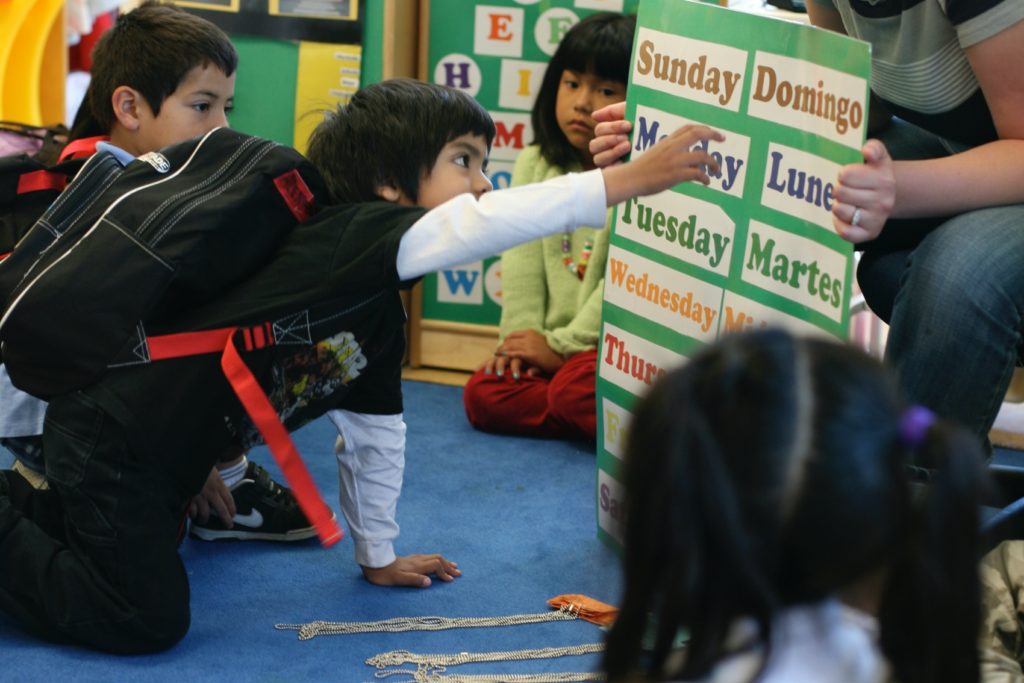Building a Welcoming Dual-Language Classroom


In the Winter of 1975, I arrived in the United States with my mother and began kindergarten a few weeks after that, knowing just a few words of English I picked up watching Sesame Street. I remember seeing for the first time my red brick school building, with the steps leading to the double door entrance. I had attended preschool in my native country, Brazil, but it had been built for tropical weather—only one story tall, and sprawling, to taking advantage of the breeze that would move between the buildings. I was accustomed to the presence of trees and greenery and covered outdoor spaces to play in the shade and seek shelter from the rains. The playground at this new school, with its black expanse of nothingness, minimal grass, and no soccer field, in the cold of a Northeast U.S. winter, was nothing like it. I knew, in the Brazilian summer I had just left, my friends were still playing. I remember thinking that this new school seemed very tall, and at that moment feeling very cold.
I did not want to stay there. The inside seemed so tight, with narrow hallways, and closed-door after closed-door after closed-door. I didn’t see anyone and worried that my mother was going to leave me in this quiet, empty building. In Brazil, she had left me with my grandmother, aunt, uncle, and cousins. We lived on my grandparent’s land, which had been divided among several siblings to build homes and start families. This would be the first time I was left with strangers. It had been weeks of “firsts” by that point—I clearly remember being at the airport, and stepping on the pad of the automatic door, and being startled as it magically opened. There were thousands more “firsts” ahead of me.
Welcoming Bilingual and Mutilingual Families
I want every teacher to imagine what that might be like, whenever they are welcoming a new child with limited English language skills into their class. We all know the challenges that we as teachers face when integrating a new child into an established classroom community mid-year, but it’s nowhere close to what the child is going through. Oftentimes, children whose families have just immigrated or who might be here as migrant workers arrive at different times of the year for reasons that are outside of their control. In my case, it just happened to be that the two countries I was moving between were in different hemispheres, and the end of the Brazilian school year falls in December.
Every teacher should also remember that a challenge is not a bad thing. Challenges keep us on our toes and make us better at our craft. Educators should always take the “asset approach” to new students, welcoming newness into our space as an opportunity to enrich our community. Too often children who arrive speaking a different language and are learning English are seen as having a deficit. The reality is the complete opposite. In reality, a new student who speaks a different language represents a bilingual or multilingual learner in the making. The most recent research on children who learn more than one language shows that their executive functioning skills are higher than those of children who speak only one. These skills include focusing, multitasking, and weeding out unnecessary information. They are strong predictors of long-term academic success and have also been shown to stave off symptoms of dementia later in life.
A Great Asset to Any Classroom Community
A child that arrives with established language skills, who is beginning to demonstrate English language comprehension and production or is already demonstrating it—such a child is a great asset.
Keeping this asset approach in mind allows teachers to be creative in their approach to children who are dual-language learners in ways that can affect the rest of their lives. I was eventually introduced to my teacher and class behind one of those closed doors, and what I found was a warm and kind teacher who showed interest in me and my mother. She got to know me and my interests and at the end of that half-year, she asked my mother (with my help as the translator) if I could stay in Kindergarten one more year with her. She knew how much progress I had made and wanted more time with me to support my development and learning. I was not being “held back” due to a deficit, I was being held on to as an asset! Mrs. Caldito found ways to give me leadership opportunities, like having me teach the class a dance for an assembly. She was nurturing my artistic spirit, knowing that this would make me feel proud to express myself. I will forever credit her with appreciating what I and my mother had to contribute to the community.
Mrs. Caldito directly inspired me to not only become a teacher but to also be a vocal advocate for the way we perceive dual-language learners or multi-language learners in early childhood education. I hope every child who is a dual-language learner or multi-language learner finds themselves in the care of a Mrs. Caldito early in their educations. And as Mrs. Caldito would attest, every teacher should be so lucky as to have a Sandra Faria as their student.
Interested in additional resources for supporting bilingual and multilingual families in your classroom?
View our free on-demand webinar, “Strategies to Honor Children’s Culture and Elevate the Strengths of Dual Language Learners.”